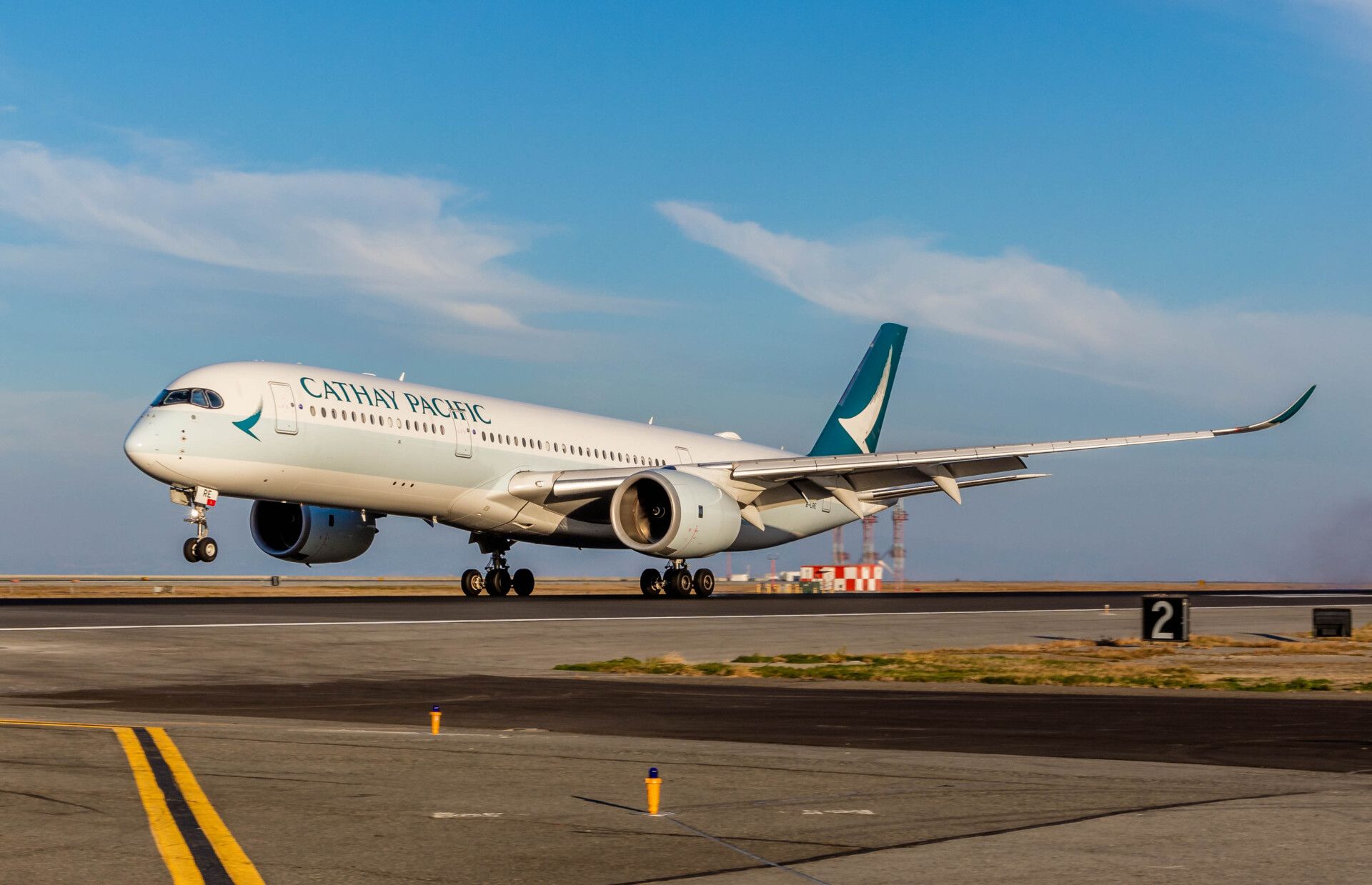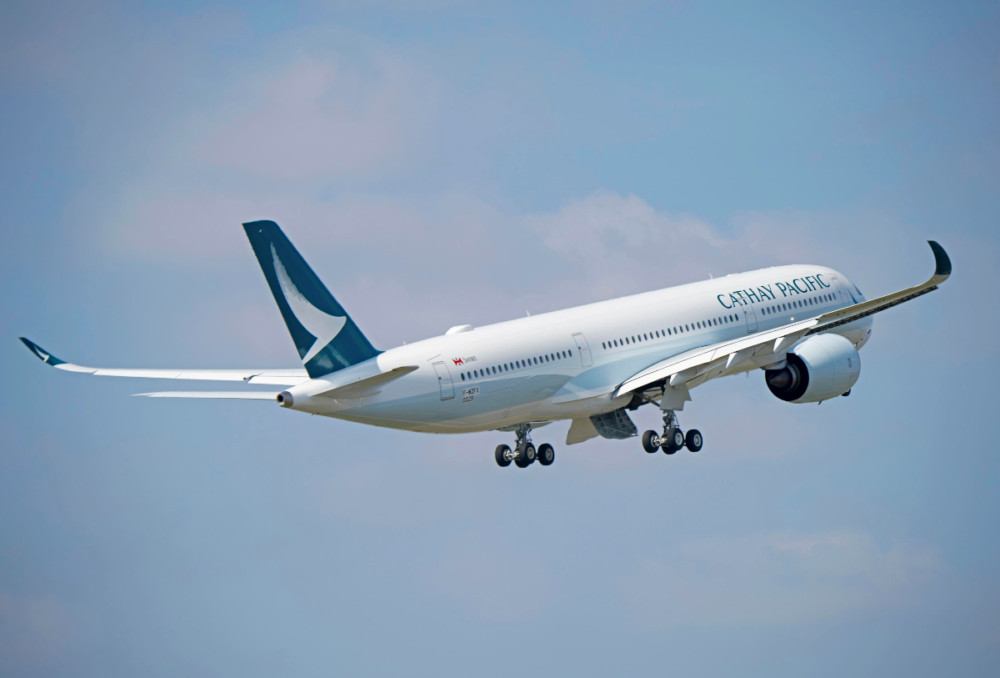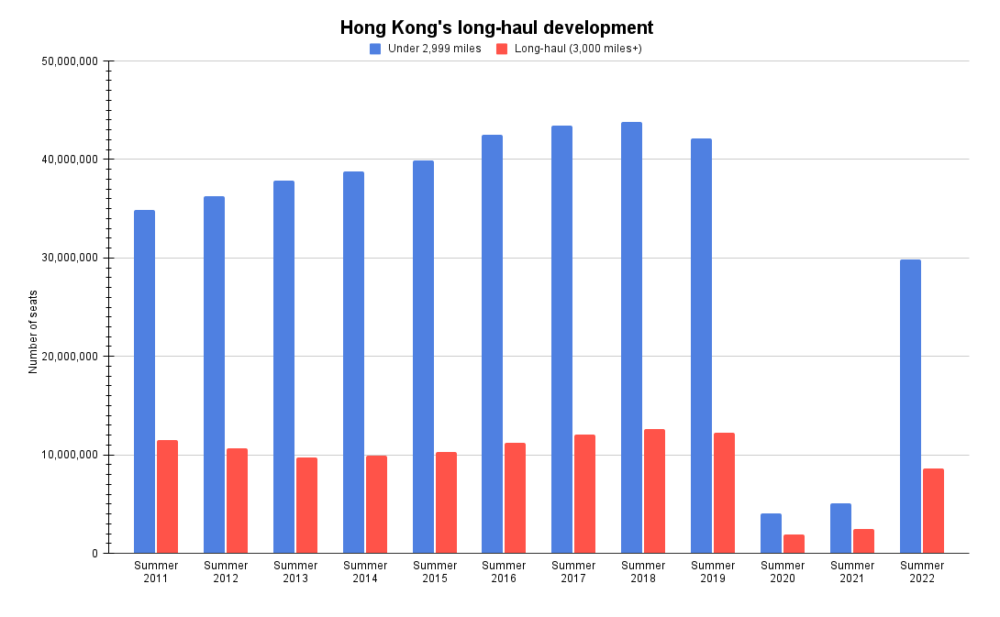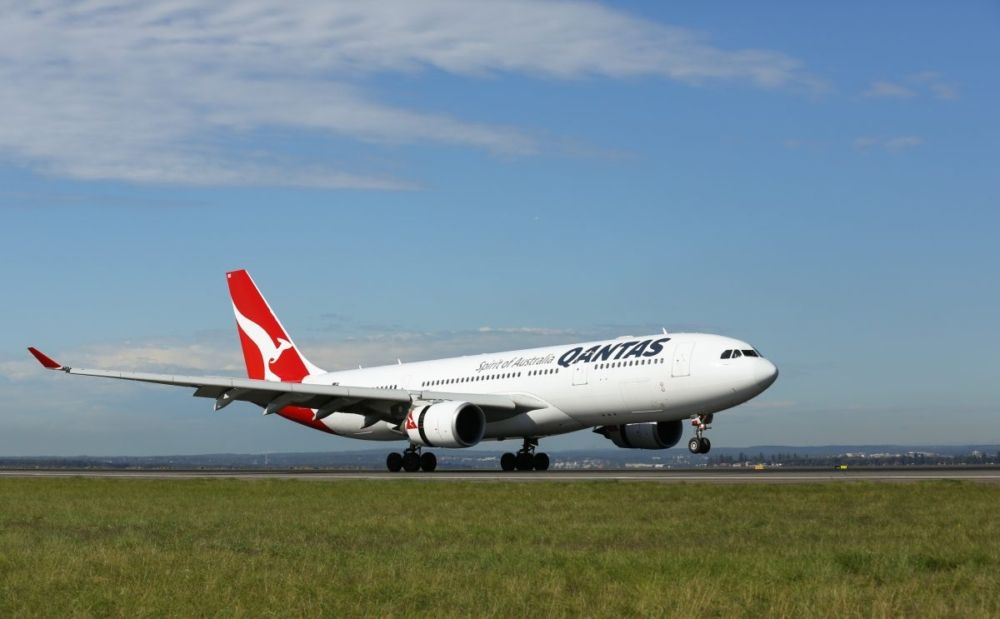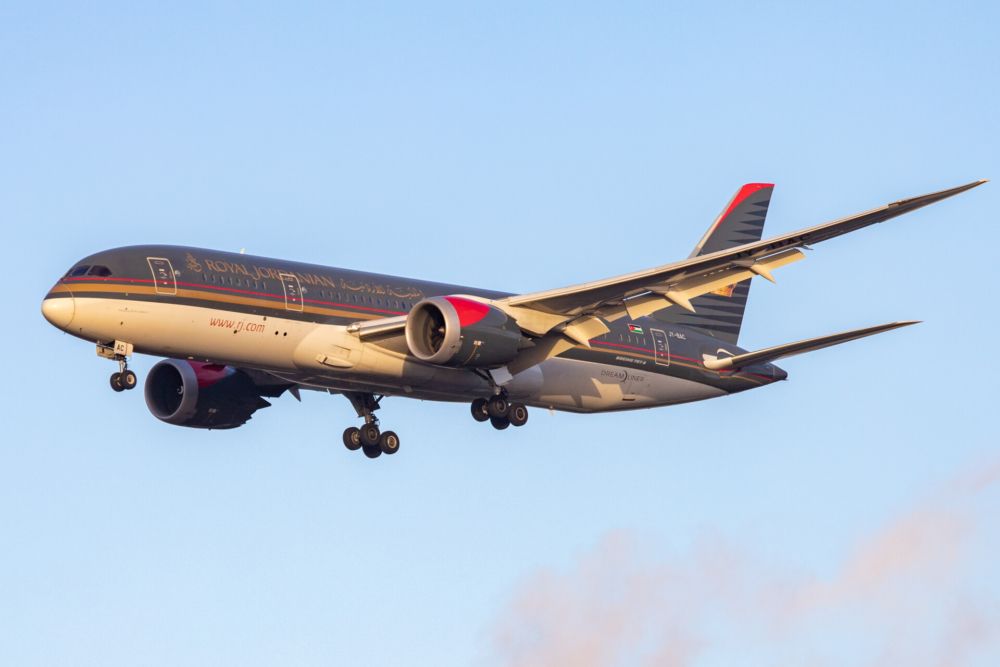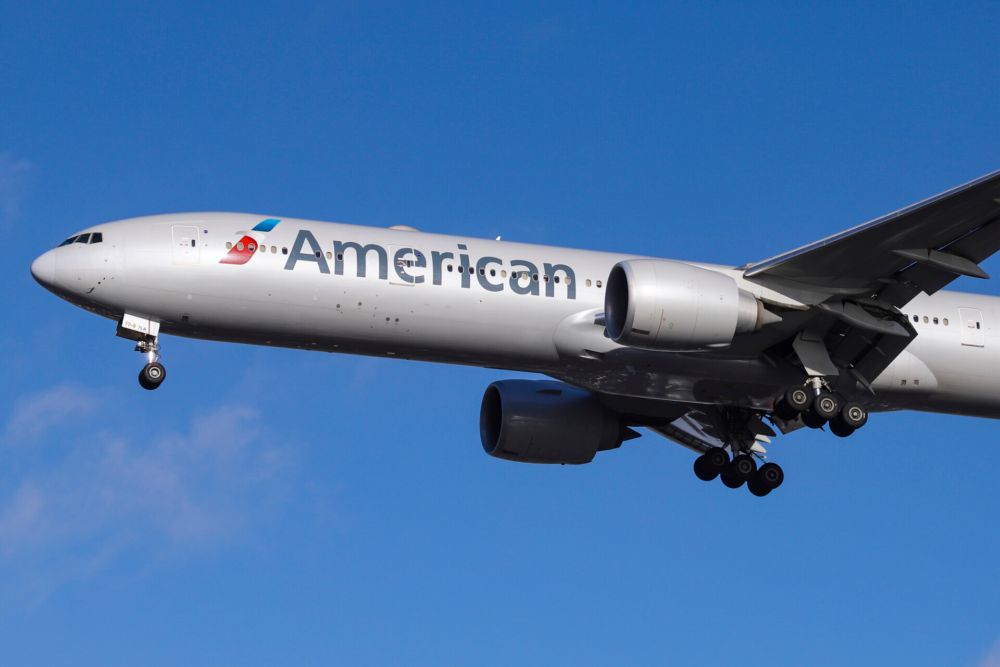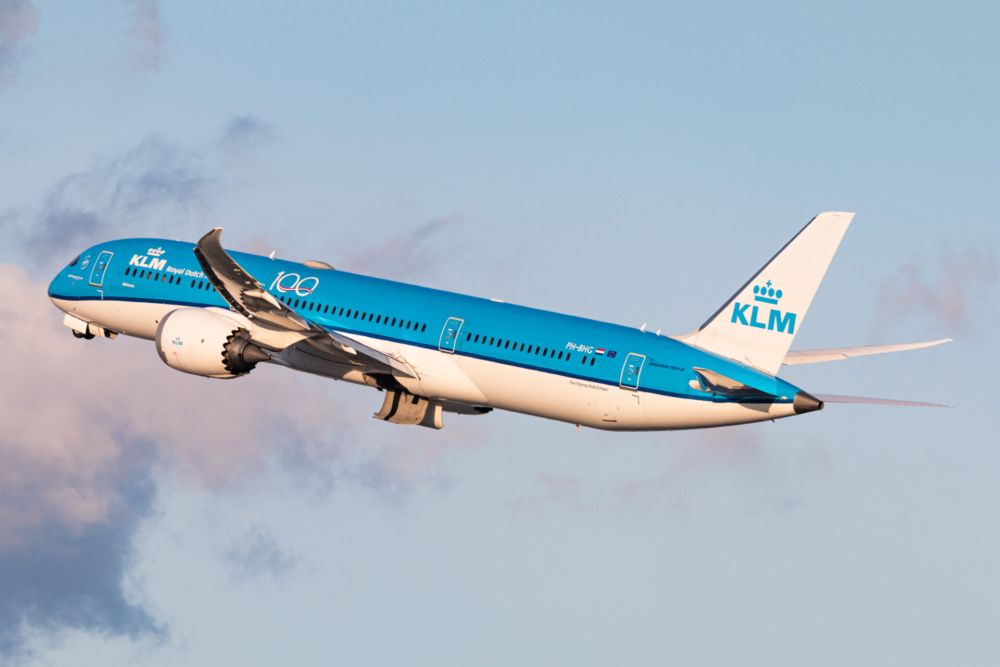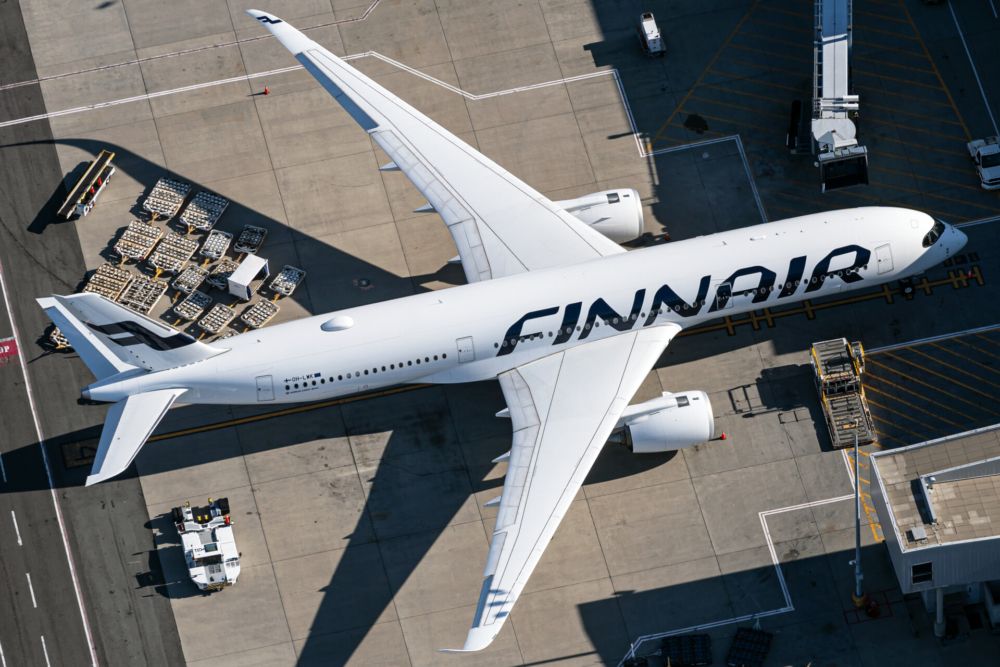Hong Kong, China, and the Far East generally have a huge path ahead to recovery. Hong Kong's current long-haul schedule next summer is currently highly ambitious, with significant changes likely.
Hong Kong's long-haul network next summer
Hong Kong is expected to be the world's 14th busiest airport for long-haul seats next summer, where long-haul is defined as 3,000 miles (4,828 km) or more. The pandemic has necessarily pushed it down from 10th in summer 2019, with Asia (including Hong Kong) still suffering greatly.
The airport ranks fourth busiest within Asia, one behind Tokyo Haneda and one ahead of Tokyo Narita. Hong Kong has fallen two places, while Singapore Changi, which recently welcomed the restart of Singapore Airlines' A380s, has retailed the top spot. But Hong Kong is likely to slip further.
Summer schedules are likely to be cut significantly
Hong Kong is down for 8.6 million long-haul seats next summer, 70.3% of what it had in the last normal peak season. That's based on schedules submitted by airlines to data experts OAG as of December 13th. As always, these are simply seats for sale. We don't know to what degree they'll be sold and, if they are, at what price.
The currently planned schedule is extraordinarily bullish, with massive changes likely to be made in the lead-up to the new season. After all, Cathay Pacific carried a mere 76,430 passengers in October and even fewer in November. As the dominant airline, it has a considerable way to go.
As you'd expect, Cathay Pacific also said that long-haul was disproportionately badly affected. Nonetheless, next summer, this market will have just over a one-fifth (22%) share of Hong Kong's scheduled capacity, more or less the same as in recent times. Unless the recovery is quick and genuine, expect that to reduce greatly.
Stay aware: Sign up for my weekly new routes newsletter.
The USA is the leading country
The US has more seats for sale than any other nation, with Boston, Chicago, JFK, Los Angeles, Newark, Saipan (in the Northern Mariana Islands, a Commonwealth of the US), and San Francisco all served. However, Dallas, Seattle, and Washington won't be served.
At destination level, Heathrow leads, with British Airways, Cathay Pacific, and Virgin Atlantic all operating it. Hong Kong is one of the few routes not to see the return of BA's A380s. The rest of Hong Kong's leading ten destinations are San Francisco, Dubai, Sydney, Melbourne, JFK, Los Angeles, Vancouver, Toronto, and Paris CDG.
Papua New Guinea is the least-served nation. The flag carrier, Air Niugini, will operate twice-weekly using the 195-seat B767-300ER. The type is good for freight, point-to-point demand, and, thanks to its codeshare with Cathay, those transiting Hong Kong to/from Port Moresby.
Some 21 passengers airlines
Twenty-one passenger airlines are expected to operate long-haul routes to Hong Kong. That's down from 30 in summer 2019. Some carriers, such as Hong Kong Airlines and Virgin Australia, no longer operate long-haul, so they shouldn't necessarily be counted.
Others haven't returned after suspending service earlier in the pandemic, including Aeroflot, Air Mauritius, Royal Jordanian, and SAS. Meanwhile, American Airlines and Etihad have pulled Hong Kong service in the past few days. Nonetheless, it is expected that all of these operators will return in time.
American and Etihad have cut Hong Kong
In the latest schedule upload, both American and Etihad removed Hong Kong from their summer plans. Etihad has cut Abu Dhabi, while American will no longer serve Dallas. Nonetheless, American will be introducing Doha.
American began Hong Kong in June 2014 from Dallas, OAG shows, with Los Angeles joining in September 2016. Etihad launched Hong Kong in April 2015. It was initially by its A330-200s, but the B787-9 (now the airline's leading aircraft type) took over from April 2018.
Hong Kong's top-10 airlines next summer
Naturally, Cathay Pacific is overwhelmingly dominant, with over six in ten (62%) of all long-haul seats for sale. Heathrow remains the largest market, even though it is a shadow of its former self. It is served using B777-300ERs. The US has more Cathay capacity than any other nation, followed by Australia.
- Cathay Pacific: an estimated 5.4 million long-haul seats for sale
- Emirates: 407,000
- United: 359,000
- Lufthansa: 285,000
- Air Canada: 260,000
- Qantas: 258,000
- British Airways: 223,000
- SWISS: 138,880
- Air New Zealand: 131,000
- Turkish Airlines: 129,000
Qatar Airways and Finnair are badly hit
Multiple airlines have, understandably, reduced their Hong Kong capacity and may change it again. Qatar Airways, for example, has just 41% of what it had before. It has cut its twice-daily Doha service to once-daily. While the B777-300ER used to operate, it is now in the hands of the lower-capacity A350-900. QR818 leaves Qatar at 02:40 and arrives Hong Kong at 16:00. Returning, QR817 departs at 01:45 and returns at 05:45.
It is a similar story with Finnair. It has reduced its flights by half, now with a once-daily, A350-900 offering. AY99 leaves Helsinki at 23:55 and arrives Hong Kong at 14:45. On the way back, AY100 departs at 00:25 and arrives home at 06:00. Because of slow recovery in Asia, Finnair has shifted aircraft to focus instead on North America.
What do you think about the recovery in Hong Kong and Asia generally? Let us know in the comments.

